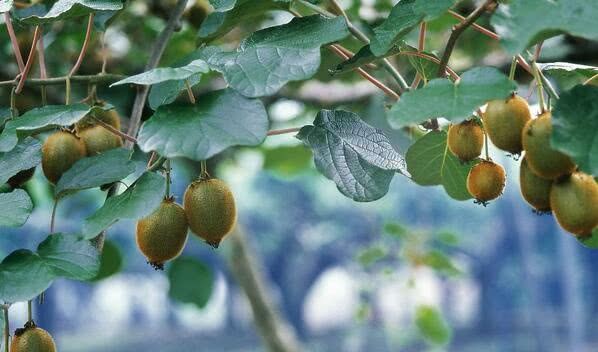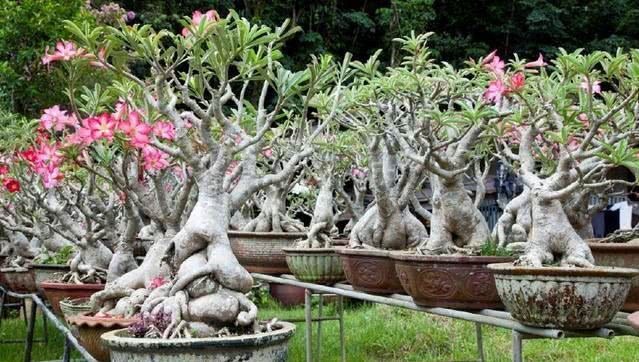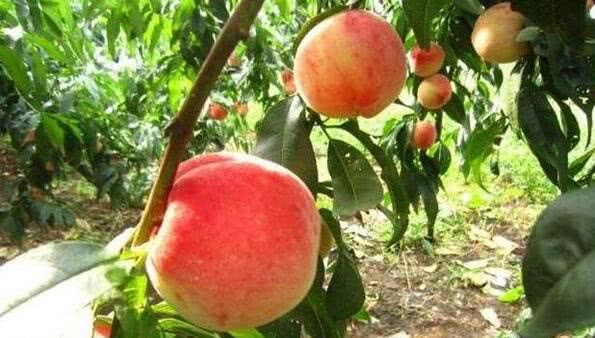Cause Analysis and Preventive measures of Frost injury of kiwifruit

Kiwifruit is a very popular fruit, which has high edible value and nutritional value, and has a large planting area in China, but there is a great difference between the north and the south of our country. Low temperature in winter is easy to cause kiwifruit freezing injury. If the control is not timely, it will seriously affect the yield of the orchard. The following is about the cause analysis and preventive measures of kiwifruit frost injury, which can be used as a reference for growers.
1 the harm of freezing injury to the production of orchard
After the occurrence of kiwifruit frost injury, light caused yield reduction and poor harvest in the second year, resulting in a large number of canker disease; heavy, the whole garden dead trees, resulting in no harvest. In the anti-freezing measures, the majority of fruit farmers generally only pay attention to the trunk protection, ignoring the fruit branch (fruit branch group) protection. Attention should be paid to the protection of kiwifruit branches (fruiting branches) in production in order to reduce the occurrence of freezing injury and improve the sprouting quality of trees in spring.
2 types of freezing injury
The types of frost injury include frost and cold injury. Frost is divided into early (autumn) frost and late (next spring) frost. Early frost means that the temperature in autumn suddenly drops to about 0 ℃ when the temperature is about 10 ℃.
Freezing injury refers to the freezing injury caused by extreme temperature lower than-15 ℃ or extremely low temperature lasting more than one week after heavy snow drops in winter.
3 factors affecting the occurrence of frost injury
3. 1 abrupt change of climatic conditions
(1) cooling time. Early occurrence of low temperatures in autumn or frost in spring, such as unnatural fall of leaves in autumn (such as early heavy snow on November 23, 2016), such as after foliage in spring (such as snow on April 12, 2010). The abnormal low temperature when these trees are not dormant does great harm to the stress of the trees.
(2) extremely low temperature. The so-called extreme low temperature mainly refers to the relatively stable temperature value which is obviously lower than the normal year in the region. For example, the low temperature in winter in Guanzhong area is mostly about-10 ℃, if it is lower than-15 ℃ or even close to-20 ℃, it is extremely low temperature, and such extreme low temperature is extremely prone to freezing damage (for example, the winter low temperature in 2015 is-20 ℃).
(3) duration. It may be a normal low temperature or slightly lower than the perennial low temperature in this area, but the low temperature lasts for a long time, such as the low temperature of-13 ℃ in winter 2003 lasted more than 7 days, which led to the occurrence of large area freezing injury in Guanzhong kiwifruit producing area.
3. 2 the topography of the garden
Low-lying areas are prone to frost injury.
3. 3 variety difference
Soft jujube kiwifruit has strong cold resistance, delicious kiwifruit is more cold-resistant and freeze-resistant, and Chinese kiwifruit is poor.
3. 4 differences in growth and tree age
In the same variety, the strong growth potential has strong cold resistance and freezing resistance, while in the same variety, the cold resistance and freezing resistance of adult trees is stronger than that of young trees.
4Preventive measures of freezing injury
4. 1 principle of prevention
The main stem anti-freezing is the key, and the branch anti-freezing is the key.
4. 2 prevention priorities
The interface between the old, weak, sick and disabled trees and young trees is below 60 cm from the ground.
4. 3 preventive methods
Select varieties with strong disease resistance and frost resistance. To build a garden in a high-lying place, do not build a garden north of the Xibao North Line at the northern foot of the Qinling Mountains. Increase the application of organic fertilizer, strengthen the summer management, enhance the tree potential and improve the frost resistance of trees. The tree body is painted white or brushed with antifreeze to keep the tree warm. Wheat straw and antifreeze belt are used to bind the trunk of the tree and other protection and anti-freezing. Cultivate soil at the root neck of the tree. Strengthen pruning and leave more branches to prevent frost injury and affect the annual yield in the coming year. Winter irrigation can also be used in some places. Chinese kiwifruit should be cultivated in protected area (greenhouse).
4. 4 precautions against freezing injury in heavy snow and low temperature weather
Shake off the snow on the branches of the park in time to prevent the snow from breaking the branches and reduce the occurrence of freezing injury. The grafting parts of young trees should be covered with heat preservation bags to prevent frost injury and ensure the survival rate. Therefore, it is necessary to remove the snow in the root neck of the trunk in time, and the uncultivated soil in the root neck should be cultivated in time to prevent freezing. After the orchard crushed branches are trimmed, seal with shearing oil is applied in time, which is beneficial to wound healing. The protected fruit trees should clean the snow in the shed in time and take low-temperature anti-freezing measures such as increasing night mulch and heating in the greenhouse.
(5) repair of frost injury and tree management measures
5. 1 mild to moderate frost injury
Kiwifruit trees with mild freezing damage can be fertilized and irrigated before thawing in early spring in order to restore the tree potential. Scrape off frozen skin or spray before germination
5 Baumedu stone sulfur mixture to prevent bacterial infection and egg parasitism. At the same time, leave as few flowers and fruit as possible.
5. 2 severe freezing injury
For trees seriously damaged by freezing, the damaged branches should be cut off, and the cut should be closed with sealing oil after cutting. Fruiting trees should also remove all flowers and leave no fruit in order to reduce the nutrient consumption of the tree.
5. 3 severe freezing injury
When it is about to sprout, or 7Mel August to bridge the frost-injured parts of the main vine, there are the following two methods.
(1) connection at both ends. Cut the sturdy branches into branches 10 cm longer than the frost-injured parts, cut both ends of the branches into slopes of 3 cm long (the cutting plane is on the same side), and then cut into a "T" shape with a knife at the upper and lower ends of the main vine, reaching to the xylem, and then insert both ends of the cut branches into incisions and wrap them with plastic strips.
(2) one-end connection. That is, the use of basal root tiller bridging, if the root tiller is short, wait until grow to a certain height, can promote root tiller bridging.
5. 4 very serious freezing injury
For the kiwifruit trees seriously damaged by freezing, although they can not be restored through various measures, the method of flat stubble should be adopted, and the stubble should be carried out at about 15 cm at the base of the trunk, and after germination, coring should be carried out to promote its branching.
The kiwifruit plants seriously damaged by freezing damage destroyed the balance of water and nutrients between aboveground and underground parts. 0. 0 can be sprayed on the leaf before or after flowering. 2% urea solution or foliar fertilizer is used to supplement the nutrition of the tree, and after the tree is gradually recovered, topdressing is carried out during the fruit expansion period after fruit setting to promote growth. Freezing injury often makes the main bud lose its vitality, and the secondary bud sometimes germinates. If the same bud sprouts 2 times, it can cut off the weak ones and pick out the heart when the remaining branches grow to about 70 cm, so as to promote the branches to take shape early.
6. Prevention of frost
Pay attention to listen to the weather forecast and find that there is a sudden drop in temperature, first of all, carry out prevention in the orchard, such as spraying antifreeze in the orchard in advance, smearing the wound with effective agents such as planting platinum, and lighting raw tobacco such as wheat chaff or sawdust in the orchard the night before the frost.
Freezing injury is a common phenomenon in the process of kiwifruit planting, and it does great harm. If it is not controlled in time, it will seriously affect the quality and yield of kiwifruit. The following is about the cause analysis and preventive measures of kiwifruit freezing injury. Growers can learn from it.
- Prev

It is thought that the rhizome of desert rose has high ornamental value and pruning after flowering is the key.
Desert rose, hearing the name, many people will think that it is a kind of rose, in fact, it is a very eye-catching succulent plant, because it has swollen roots, if well maintained, its roots will be as thick as bonsai banyan.
- Next

Pruning time and pruning techniques of peach trees at various stages
Pruning is a very important step in peach planting. The pruning time and pruning method of peach trees are the key. The following small series sorts out the pruning time of peach trees and the pruning techniques of peach trees at various stages. Let's learn together. Peach...
Related
- Wuhan Hospital Iron Tree Blooming Result Was Instantly Frightened by the Gardener Master
- Which variety of camellia is the most fragrant and best? Which one do you like best?
- What is the small blue coat, the breeding methods and matters needing attention of the succulent plant
- Dormancy time and maintenance management of succulent plants during dormancy
- Minas succulent how to raise, Minas succulent plant pictures
- What are the varieties of winter succulent plants
- How to raise succulent plants in twelve rolls? let's take a look at some experience of breeding twelve rolls.
- Attention should be paid to water control for succulent plants during dormant period (winter and summer)
- Watering experience of twelve rolls of succulent plants
- Techniques for fertilizing succulent plants. An article will let you know how to fertilize succulent plants.

